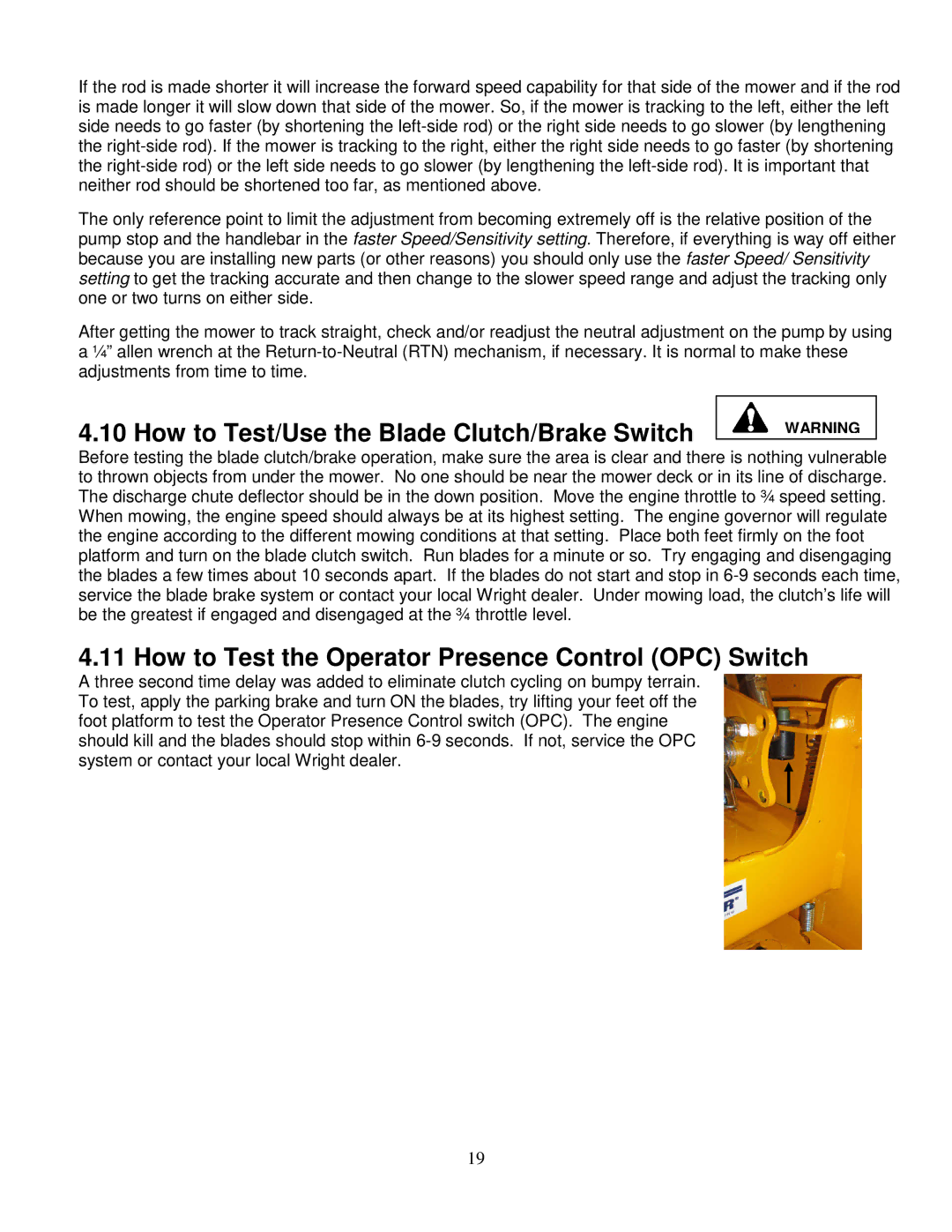3234-33, 3228-33 specifications
Wright Manufacturing, a leading name in the production of commercial lawn care equipment, has made a significant mark in the industry with its impressive model range, notably the 3228-33 and 3234-33 mowers. These models are designed for professionals who require reliable performance, durability, and superior maneuverability in various landscape conditions.The Wright Manufacturing 3228-33 is a stand-on mower that combines compact design with powerful performance. The mower is equipped with a robust 33-inch cutting deck that allows for impressive maneuverability without sacrificing cutting efficiency. This model features a high-quality Kawasaki engine that delivers exceptional power and reliability, ensuring that users can tackle even the most challenging jobs with ease.
One of the standout technologies in the 3228-33 is its patented Wright deck design. This design provides a unique airflow pattern that facilitates superior grass clipping dispersal, enhancing the overall cutting quality. Furthermore, the mower incorporates an intuitive operator control system, allowing users to easily adjust their speed and cutting height for optimal performance in various conditions.
On the other hand, the Wright Manufacturing 3234-33 offers a similar yet amplified experience. This model features a larger 34-inch cutting deck, giving operators the ability to cover more ground efficiently while still maintaining the tight turning radius that Wright mowers are renowned for. The enhanced deck size is complemented by a powerful engine that ensures consistent performance throughout the day, making it ideal for larger properties or commercial applications.
Both models boast a user-friendly design with a comfortable stand-on platform, which minimizes fatigue during extended use. The platform is also equipped with vibration-dampening technology, ensuring a smooth ride over uneven terrain. Additionally, the mowers' heavy-duty construction is designed to withstand rigorous use, featuring a frame that can endure the daily demands of professional landscaping.
In terms of maintenance, both the 3228-33 and 3234-33 are designed for ease of service. Their accessible components make routine check-ups and repairs straightforward, minimizing downtime and keeping the mowers in peak condition.
Overall, Wright Manufacturing’s 3228-33 and 3234-33 models exemplify innovation and performance in commercial mowing. With their advanced features and durable construction, they are ideal options for landscaping professionals looking to enhance efficiency and deliver exceptional results. These models continue to represent Wright Manufacturing's commitment to delivering superior mowing solutions tailored for the landscape industry.

